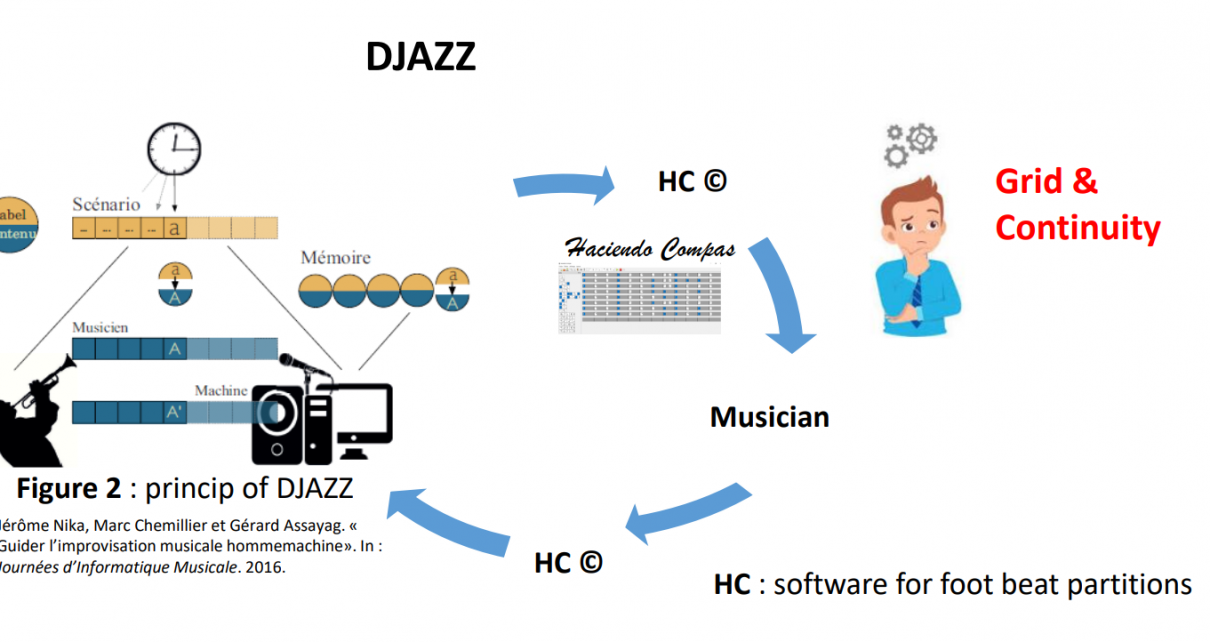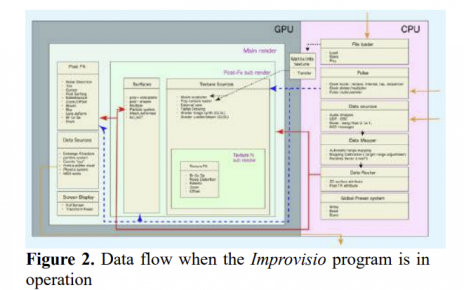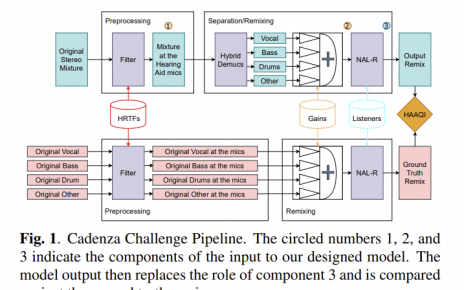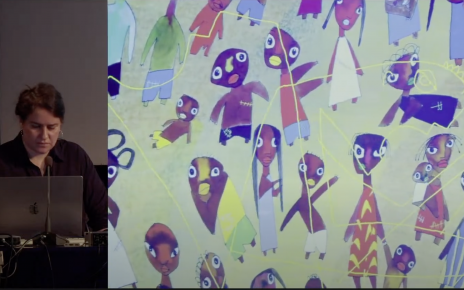Dominique Costa, Séraphin Costa, Mikhail Malt, Marc Chemillier, Gerard Assayag, Machine-Musician Co-improvisation: A Djazz Incursion into Flamenco, Filippo Borini Baraldi (eds.), Proceedings of the Second Symposium of the ICTM Study Group on Sound, Movement, and the Sciences (SoMoS), Barcelona, October 26, 2022, published 2023, p. 59-62.h
Abstract: Flamenco is a traditional Spanish music from Andalusia. Based on oral tradition and transmission, traditional Flamenco, has implicit rules that allow musicians and dancers to interpret complex patterns without previous rehearsal. The experiments described here attempt to discover these rules by setting a musical improvisation program to play in the flamenco style and by analyzing the reactions of expert musicians listening to it.
There are numerous styles or “palos” in Flamenco, however some general guidelines can be extracted. Here we focus on two general rules: i) During improvised musical developments where one partner takes the lead, musicians “resolve” together through a “remate” ii) The underlying common pattern is rhythm We tried to determine the minimal conditions to provide “acceptable Flamenco” through the Djazz environment developed by IRCAM and EHESS.
We examined typical “palos”: Tangos (binary), Fandangos (ternary) and Bulerias (mixed). The acceptability of the Djazz productions were tested by i) submitting the improvisations to musicians and listen to their advice, ii) co-improvising with musicians. In a first attempt, a “letra” (song) of Fandango was investigated. No grid was imposed. The results were unacceptable, as neither the harmony nor the rhythm and the remate were distinguishable.
Then, a harmony pattern (chords) was applied. It was again not satisfactory, as the same chord in different places has not the same role. Thus, harmony and rhythm must be considered. We then focused on the rhythm aspects of Bulerias, using “palmas” (hands clapping). The acceptable grid was the one, where the “remate” is clearly identified. Additionally, we could define the statistical fingerprint of the Bulerias palo and compared the Djazz production to that of musicians.
The conclusion of the study on Bulerias was directly applied to a live improvisation with musicians on Tangos, without preliminary tests, but we directly imposed a grid where the remate is clearly identified. Djazz production was satisfying for two criteria: the palo was respected and the musicians (guitar, dance) could co-improvise upon the Djazz Proposals.




